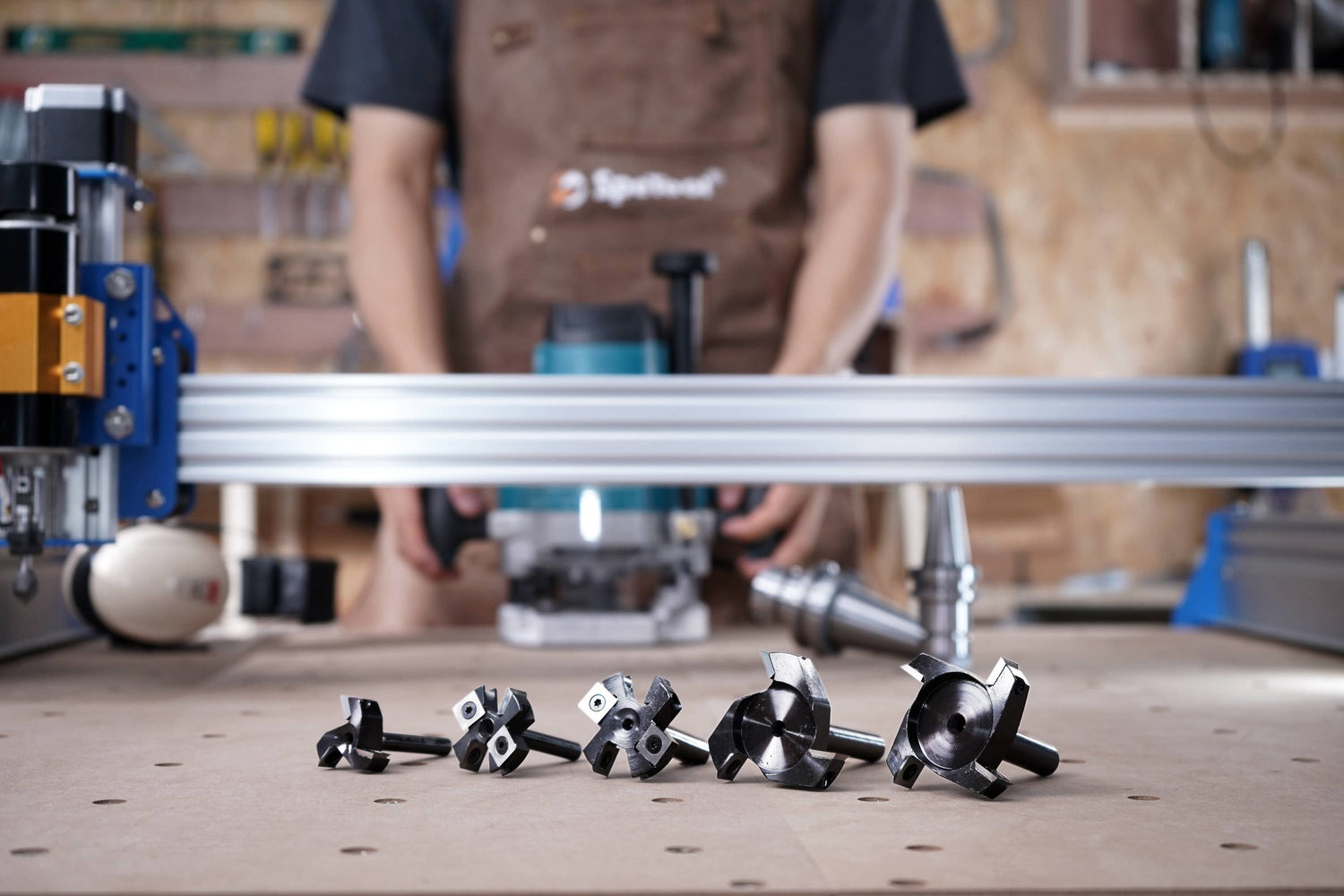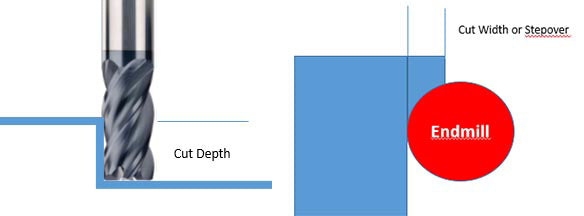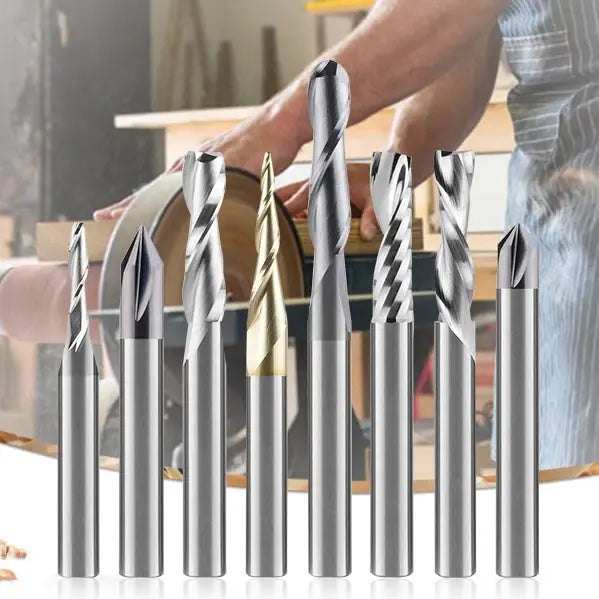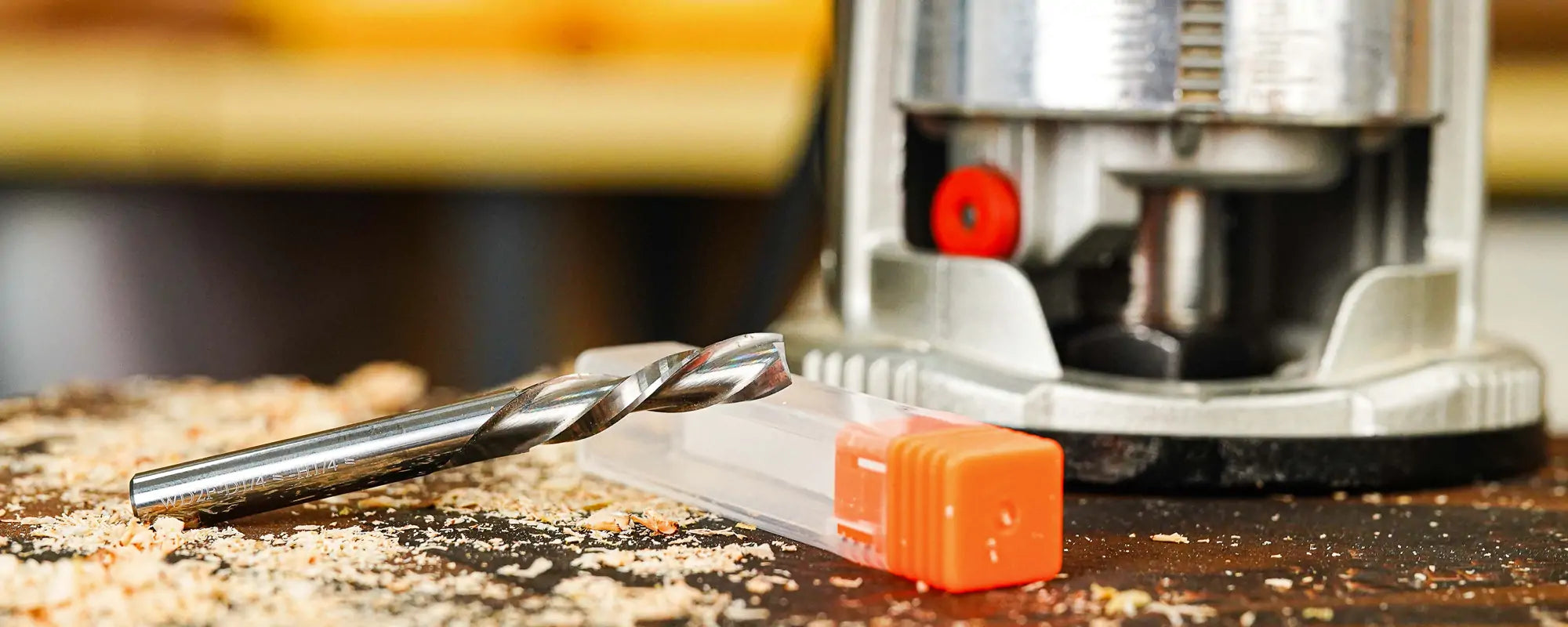Woodworking Router Bits: The Complete Guide for Beginners
If you're a beginner woodworker, you may be wondering what a router bit is and how it can be used in your projects. A woodworking router bit is a tool used in conjunction with a router machine to create intricate designs, shapes, and patterns on wood surfaces. These bits are available in a wide variety of shapes and sizes, each with a specific function.
In this article, we'll discuss the different types of woodworking router bits, their uses, and how to choose the right one for your project. We'll also provide some tips and tricks to help you get the most out of your woodworking router bits.
Types of Router Bits
Straight Router Bits
Straight router bits are the most basic type of router bit and are used for cutting straight lines and grooves into wood. These bits have a simple design, with a straight cutting edge and a flat bottom. They are ideal for creating dadoes, grooves, and rabbets in wood.
Flush Trim Router Bits
Flush trim router bits are used to trim the edges of a workpiece to match the contour of another piece. These bits have a bearing at the tip that rides along the edge of the piece being trimmed, ensuring a clean, even cut.
Rabbeting Router Bits
Rabbeting router bits are designed to cut a notch or rabbet in the edge of a piece of wood. These bits can be used to create joints or to add decorative details to a project.
Chamfer Router Bits
Chamfer router bits are used to create beveled edges on wood. These bits come in a variety of angles, allowing you to create different types of chamfers depending on the bit you choose.
Cove Router Bits
Cove router bits are used to create concave or rounded edges on wood. These bits come in a variety of sizes, allowing you to create different sizes of coves.
Roundover Router Bits
Roundover router bits are used to create rounded edges on wood. These bits come in a variety of sizes, allowing you to create different sizes of roundovers.
Ogee Router Bits
Ogee router bits are used to create a decorative edge on wood. These bits have a complex shape that creates an S-shaped curve on the edge of the wood.
Choosing the Right Router Bit
Choosing the right router bit for your project can be overwhelming, especially with so many options available. Here are some factors to consider when selecting a router bit:
Bit Shank Size
The shank size of the router bit needs to match the collet size of your router machine. Most router machines come with a 1/4 inch or 1/2 inch collet, so make sure the shank size of the bit you choose matches the collet size of your machine.
Bit Diameter
The diameter of the bit determines the size of the cut it can make. Choose a bit with a diameter that matches the size of the cut you want to make.
Bit Material
Router bits are typically made from high-speed steel, carbide, or diamond-tipped. Carbide and diamond-tipped bits are more expensive but last longer and can be used for tougher materials like hardwood.
Bit Shape
The shape of the bit determines the type of cut it can make. Choose a bit with the shape that matches the type of cut you want to make.
Tips for Using Router Bits
Use a router table
A router table provides a stable surface for your workpiece and allows you to make more precise cuts. It also allows you to use both hands to guide the workpiece, increasing safety.
Choose the right speed
The speed of your router machine should be adjusted according to the material you're working with and the size of the bit you're using. A slower speed is recommended for larger bits and harder woods, while a faster speed can be used for smaller bits and softer woods.
Take multiple passes
When making a deep cut, it's best to take multiple passes instead of trying to make the cut in one pass. This will help to prevent the bit from overheating and will result in a cleaner cut.
Use a fence or guide
Using a fence or guide can help you make more precise cuts and ensure that the bit stays on the correct path. This is especially important when making curved or angled cuts.
Keep the bit sharp
A dull router bit will result in a poor-quality cut and can also be dangerous. Make sure to keep your router bits sharp and replace them when they become worn or damaged.
Conclusion
router bits for wood are an essential tool for any woodworker, whether you're a beginner or a seasoned pro. With the right bit, you can create intricate designs, shapes, and patterns on wood surfaces, adding a unique touch to your projects.
When choosing a router bit, consider the shank size, diameter, material, and shape of the bit. And remember to use a router table, choose the right speed, take multiple passes, use a fence or guide, and keep the bit sharp to achieve the best results.
With these tips and tricks, you'll be able to use your woodworking router bits with confidence and create beautiful, high-quality projects.




